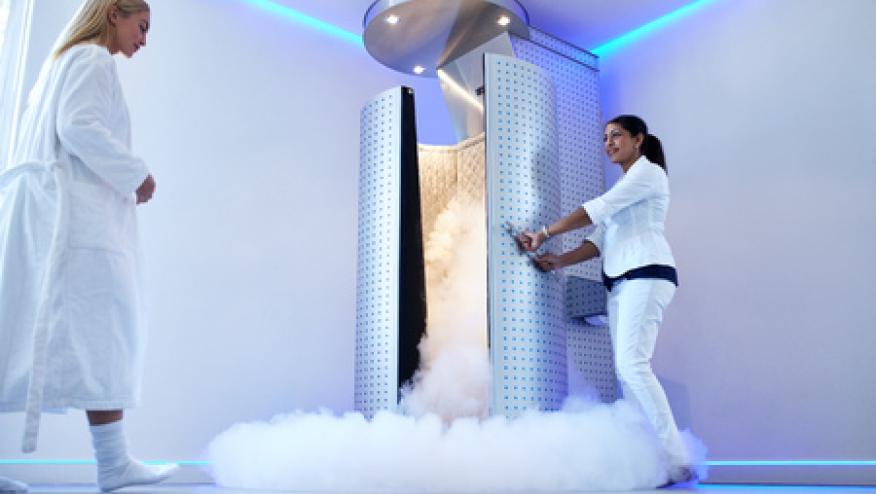Cryotherapy Never FDA Approved Save

Another injury related to whole body cryotherapy (WBC) has been reported by practitioners in Philadelphia, serving as yet another warning of WBC's potential to cause serious adverse effects.
As detailed by Jordan Wang, MD, of Thomas Jefferson University and colleagues in the Journal of the American Academy of Dermatology, a 71-year old patient presented to the center with a cold burn injury that he had sustained while undergoing WBC at a cryotherapy facility the day before. The man had opted to use WBC for the treatment of his back pain and arthritis.
The researchers said they suspected that a nozzle through which liquid nitrogen is sprayed into the chamber had malfunctioned and that the liquid nitrogen was instead sprayed directly on the patient's back for a brief period of time.
"This is an unfortunate case of a burn secondary to cold, [and] it can be compared to a frost bite," Cameron Rokhsar, MD, of New York Cosmetic, Skin & Laser Surgery Center in New York, told MedPage Today via email when asked for his perspective. "The cooling treatment protocol is not Food and Drug Administration-approved, and there is no proven scientific benefit to this treatment, but there is a real risk of burn as is highlighted by this case," he said.
The authors agreed, and noted in their case report that "WBC is a new and trendy treatment of which practitioners should be aware because of potential adverse events."
The burn patient was subsequently treated with systemic steroids, topical corticosteroids, ibuprofen, and silver sulfadiazine cream to protect his denuded skin.
Wang and colleagues explained that spas, wellness centers, and cryotherapy facilities have opened up to the general public in recent years and have begun offering WBC to anyone willing to pay for it. "The cryotherapy chamber is appropriately the size of a phototherapy light box," Wang explained. "And while standing in the chamber, the head of the patient is above the top and outside of the chamber," with the rest of the body is "bombarded" with a liquid nitrogen mist that cools the chamber from -100° to -140° C.
Each session lasts for 2-5 minutes, and proponents of WBC think that people can engage in several sessions a week. Treatment is thought to hasten muscle recovery and alleviate back pain and muscle stiffness. WBC is also claimed to improve energy and sleep patterns as well as skin health. However, the FDA has never approved any type of WBC chamber and in fact, warns against their use because of the potential harmful effects including frostbite, burns, eye injury, and even asphyxiation.
A Cochrane review published in 2015 found insufficient evidence to support any claims that WBC can prevent or treat muscle soreness after exercise, and several documented adverse events related to WBC have been reported in the literature.
For example, one case report documented an abdominal aortic dissection in a middle-aged male following multiple WBC sessions, and another report described a patient who developed an episode of cold panniculitis after eight WBC treatments.
As Rokhsar explained, these cooling machines use liquid nitrogen. "If the liquid nitrogen or its vapors come in contact with the skin, it can induce a burn," he added. The degree of the burn will depend on the severity and duration of exposure to the liquid nitrogen, but even short bursts of exposure can cause blisters and pain just like a burn from sources of heat.
Dermatologists often use liquid nitrogen to destroy unwanted growths on the skin such as warts and precancerous lesions by spraying nitrogen on the lesion in a controlled manner, but that is quite different to WBC.
"Cold burns are much less common than their thermal counterparts," Wang and co-authors pointed out. Nevertheless, freezing temperatures to which individuals are exposed during WBC can cause intracellular water crystallization, damaging proteins and membranes, and the resulting vasoconstriction induced by cold temperatures can also lead to hypoperfusion; endothelial injury may decrease vascular integrity.
Wang and co-authors reported no conflicts of interest.










If you are a health practitioner, you may Login/Register to comment.
Due to the nature of these comment forums, only health practitioners are allowed to comment at this time.